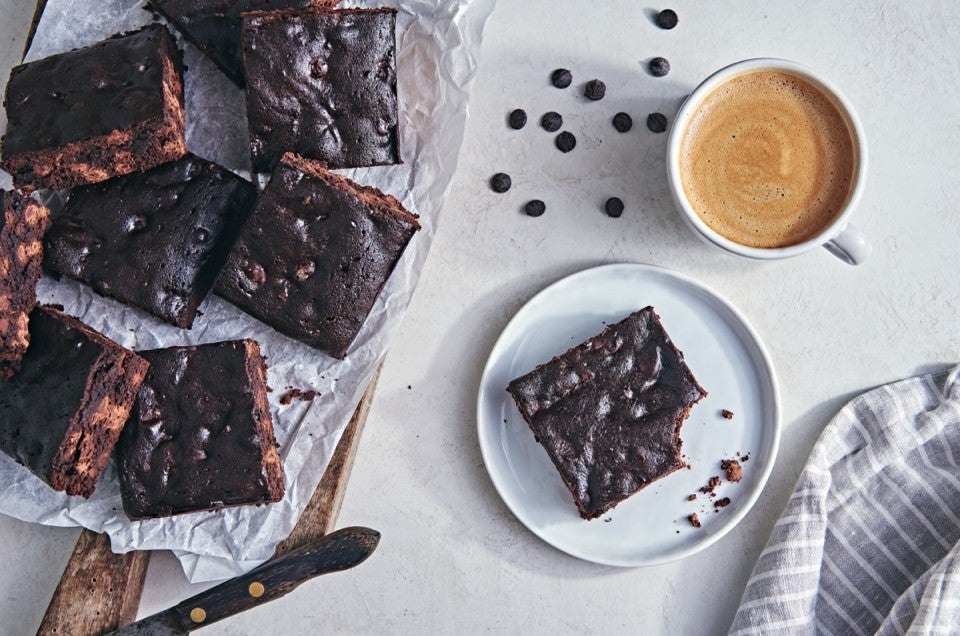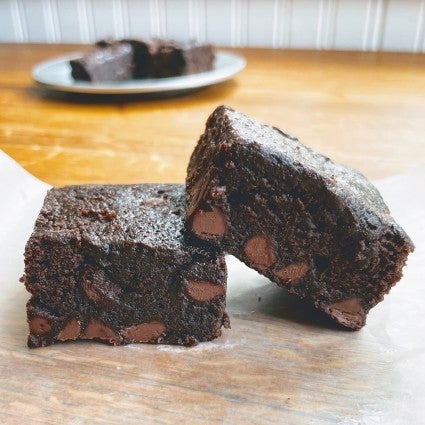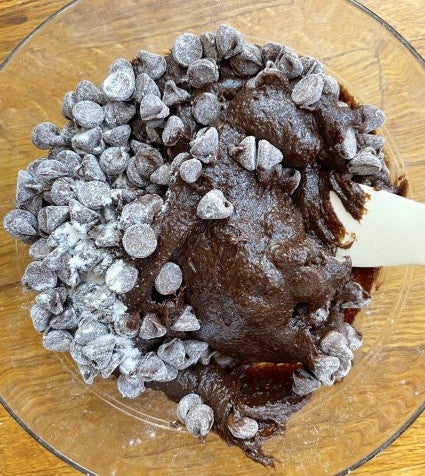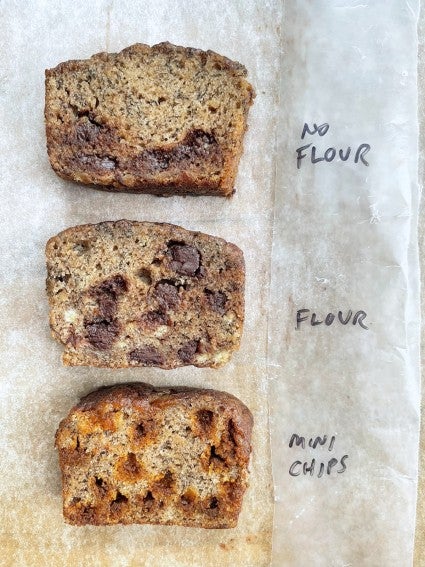Things bakers know: How to prevent chocolate chips from sinking in brownies
Tips to help your chips swim — not sink.


You have a brownie recipe you love, one that produces the perfect fudgy chocolate experience. But admit it: wouldn’t it be even better with the addition of chocolate chips? (Is there anything that doesn’t improve with more chocolate?)
So you stir a cup of chips into your batter. You bake the brownies. And you end up with brownies sitting atop a layer of melted-and-congealed chocolate: All the chips have sunk to the bottom of the pan.
What’s a baker to do?

The surface of chocolate chips is pretty slick. Because the chips are smooth, not rough, there’s less surface friction (and thus less resistance) slowing their path to the bottom of the pan.
You can counteract this by coating the chips with some flour or cocoa before mixing them into the batter. Place the chips in a bowl or jar, add a bit of flour or cocoa — I use 1/2 teaspoon for up to 2 cups (340g) of chips — and stir or shake to coat. The chips will acquire the thin coat of powder they need to create friction and prevent a plummet. Fold the coated chips into the batter, transfer to the prepared pan, and bake.

This solution is often enough to keep your chips right where you want them: scattered nicely throughout the finished brownies. But if they’re still trying to migrate to the bottom of the pan, here are some other tricks to try.
Swap in mini chips. Since they weigh less (per chip), mini chips will sink more slowly than standard chocolate chips. The resistance of the batter, even if it’s a bit on the thin side, is often enough to keep these smaller chips in place until the batter sets during baking.
Choose a recipe whose batter is thick rather than thin. The thicker the brownie batter, the more resistance it’ll offer the chips, and the more likely they are to stay put. Generally speaking, choose a recipe without added water (or coffee) or milk, one that relies solely on eggs and oil or butter for its liquid. Also, batter made with melted butter tends to be a bit thicker than that made with oil.

Sprinkle the chips on top of the batter. Simple physics: If the chips start out on top (rather than spread throughout the batter), they have farther to travel to get to the bottom. Pour the batter into the pan, then sprinkle the chips on top. Use a spatula to gently fold them just the merest bit into the batter beneath; you want to make sure they don’t end up simply melting on top before they start to sink.
Can you apply these same solutions to walnuts in blondies, blueberries in muffins, or any kind of add-ins in any type of batter?
Absolutely. Your first choice is to reduce sinking with a coating of flour (or cocoa if you’re baking something chocolate).

After that, consider the other solutions mentioned above, especially the size of the add-in. In cases where you have control over size — e.g., you can opt for chopped vs. whole nuts, or finely diced vs. chunked apples — opt for the smaller pieces. Not only will they not sink, but you’ll also ensure you’re getting the wonderful flavor of toasted nuts or fruit in every bite.
So you’ve solved your sinking chip problem. But what about brownies that end up with a dull, lusterless top crust, rather than one that shines like satin? Read How to make brownies with shiny crust.
Cover photo and food styling (Keto-Friendly Fudgiest Fudge Brownies) by Liz Neily.

